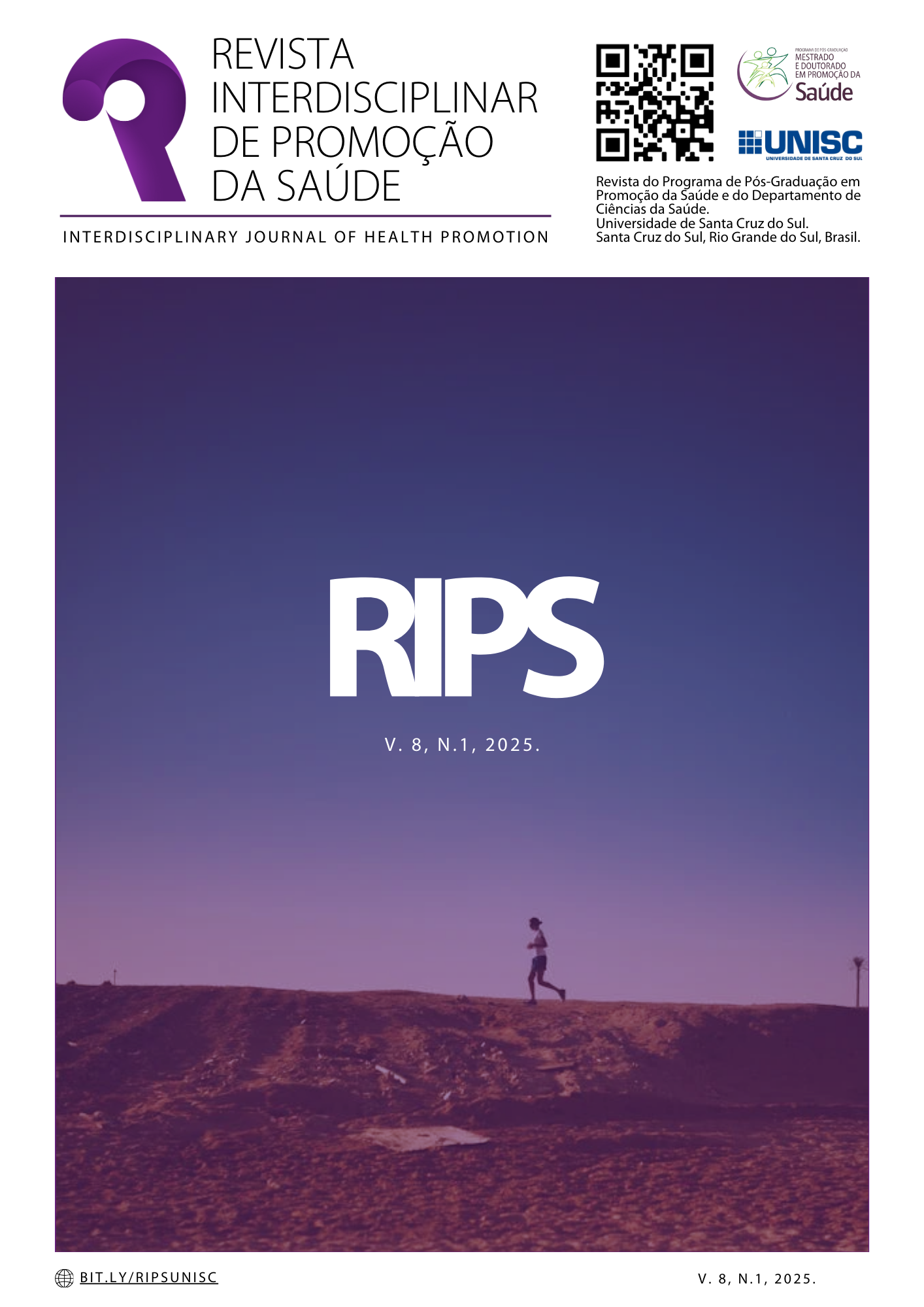Assessing the frequency of dose adjustment in acute renal dysfunction and the excess costs of antibiotic therapy in a teaching hospital
DOI:
https://doi.org/10.17058/rips.v8i1.18272Keywords:
Antimicrobial Stewardship, Dosage, Acute Kidney Injury, PharmaceuticalAbstract
Objectives: to evaluate the frequency of dose adjustment of antimicrobials in the face of acute kidney injury, the estimated excess costs with the use of these medications and the use of dialysis during the hospital stay. Methodology: cross-sectional observational study, carried out with 30 patients from a teaching hospital, who used oral and parenteral antimicrobials, concomitantly with the episode of acute kidney injury, and with dose adjustment predicted for such dysfunction. Data regarding the prescribed antimicrobials and the costs involved were collected from the hospital's computerized system. For statistical analysis, mean, standard deviation and absolute frequency were used. Results: the patients had a mean age of 70.6 ±14 years, 13 males and 17 females. Of these, three patients underwent hemodialysis sessions during the hospital stay. Among the prescribed antimicrobials, 33 were in disagreement with the literature used to analyze the prescriptions. Among the treatments performed, nine exceed the treatment time recommended by the medical team, ranging from one to three more days of use, depending on the prescribed antimicrobial, generating an estimated excess cost of R$ 538.57 with antibiotic therapy. Conclusion: the aspects observed in this study reinforce the importance of monitoring the prescriptions and consumption of antimicrobials, especially among the elderly population, avoiding the use of inappropriate doses, in view of physiological changes that may be present, as well as the length of treatment recommended, with a view to reducing the costs involved and optimizing available resources.
Downloads
References
Tamma PD, Avdic E, Li DX, Dzintars K, Cosgrove SE. Association of Adverse Events With Antibiotic Use in Hospitalized Patients. JAMA Intern Med 2017; 177(9):1308–1315. doi: https://doi.org/10.1001/jamainternmed.2017.1938
Varma MV, Feng B, Obach RS, Troutman MD, Chupka J, Miller HR, El-Kattan A. Physicochemical determinants of human renal clearance. J Med Chem 2009 Aug 13; 52(15):4844-52. doi: https://doi.org/10.1021/jm900403j
C Cox ZL, McCoy AB, Matheny ME, Bhave G, Peterson NB, Siew ED, Lewis J, Danciu I, Bian A, Shintani A, Ikizler TA, Neal EB, Peterson JF. Adverse drug events during AKI and its recovery. Clin J Am Soc Nephrol 2013 Jul; 8(7):1070-8. doi: https://doi.org/10.2215/cjn.11921112
Lastours V. Faut-il proposer une adaptation posologique lors d’une antibiothérapie? [Should doses of antibiotics be adjusted?]. Rev Med Interne 2018 Mar; 39(3):171-177. French. doi: https://doi.org/10.1016/j.revmed.2017.06.009
Crass RL, Rodvold KA, Mueller BA, Pai MP. Renal Dosing of Antibiotics: Are We Jumping the Gun? Clin Infect Dis 2019 Apr 24; 68(9):1596-1602. doi: https://doi.org/10.1093/cid/ciy790
Álvarez-Lerma F, Grau S. Management of antimicrobial use in the intensive care unit. Rev Drugs 2012 Mar 5; 72(4):447-70. doi: https://doi.org/10.2165/11599520-000000000-00000
Sociedade Brasileira de Nefrologia, SBN. Calculadoras Nefrológicas, São Paulo, SP: SBN; 2021. Disponível em: https://www.sbn.org.br/profissional/utilidades/calculadoras-nefrologicas/.
Bucuvic EM, Ponce D, Balbi AL. Fatores de risco para mortalidade na lesão renal aguda. Rev Assoc Med Bras 2011 Mar; 57(2):158–63. doi: https://doi.org/10.1590/S0104-42302011000200012
Cho AY, Yoon HJ, Lee KY, Sun IO. Clinical characteristics of sepsis-induced acute kidney injury in patients undergoing continuous renal replacement therapy. Ren Fail 2018 Nov; 40(1):403-409. doi: https://doi.org/10.1080/0886022x.2018.1489288
Luft J, Boes A, Lazzari D, Nascimento E, Busana J, Canever B. Lesão renal aguda em unidade de tratamento intensivo: características clínicas e estágios. Rev Cog Enf 2016; 26:760. doi: https://doi.org/10.5380/ce.v26i0.76010
Pérez-Fernández X, Sabater-Riera J, Sileanu FE, Vázquez-Reverón J, Ballús-Noguera J, Cárdenas-Campos P, Betbesé-Roig A, Kellum JA. Clinical variables associated with poor outcome from sepsis-associated acute kidney injury and the relationship with timing of initiation of renal replacement therapy. J Crit Care 2017 Aug; 40:154-160. doi: https://doi.org/10.1016/j.jcrc.2017.03.022
Prado FC, Ramos JA, Valle JR. Diagnóstico e Tratamento. 26. ed. São Paulo: Editora Artes Médicas; 2018.
Teles F, Santos RO, Lima HMAM, Campos RP, Teixeira EC, Alves ACA, Costa AFP, et al. The impact of dialysis on critically ill elderly patients with acute kidney injury: an analysis by propensity score matching. Braz. J. Nephrol. 2019; 41(1):14-21. doi: http://dx.doi.org/10.1590/2175-8239-JBN-2018-0058
Garnier F, Couchoud C, Landais P, Moranne O. Increased incidence of acute kidney injury requiring dialysis in metropolitan France. PLoS One.2019 Feb 7; 14(2). doi: https://doi.org/10.1371/journal.pone.0211541
Carneiro M, Ferraz T, Bueno M, Koch BE, Foresti C, Lena VF, Machado JA, Rauber JM, Krummenaauer EC, Lazaroto DM. O uso de antimicrobianos em um hospital de ensino: uma breve avaliação. Rev Assoc Med Bras 2011; 57(4):421–4. doi: https://doi.org/10.1590/S0104-42302011000400016
Mello AGNC, Nascimento MCR, Oliveira AEM, Freitas CS, Sena LWP. Análise do preenchimento correto da solicitação de antimicrobianos em um hospital de referência em oncologia do estado do Pará. Res Soc Dev 2021; 10(6):15608. doi: https://doi.org/10.33448/rsd-v10i6.15608
Azulino ACO, Júnior EPG, Tavares KBF, Coelho AD, Reis PPD, Afonso BHR et al. Análise do uso de antimicrobianos em pacientes idosos internados em um hospital militar em Belém-PA. Research Society and Development 2021; 10(13). doi: https://doi.org/10.33448/rsd-v10i13.21319
Werner NL, Hecker MT, Sethi AK, Donskey CJ. Unnecessary use of fluoroquinolone antibiotics in hospitalized patients. BMC Infect Dis 2011 Jul 5; 11:187. doi: https://doi.org/10.1186/1471-2334-11-187
Downloads
Published
How to Cite
Issue
Section
License
A submissão de originais para este periódico implica na transferência, pelos autores, dos direitos de publicação impressa e digital. Os direitos autorais para os artigos publicados são do autor, com direitos do periódico sobre a primeira publicação. Os autores somente poderão utilizar os mesmos resultados em outras publicações indicando claramente este periódico como o meio da publicação original. Em virtude de sermos um periódico de acesso aberto, permite-se o uso gratuito dos artigos em aplicações educacionais e científicas desde que citada a fonte conforme a licença CC-BY da Creative Commons.




